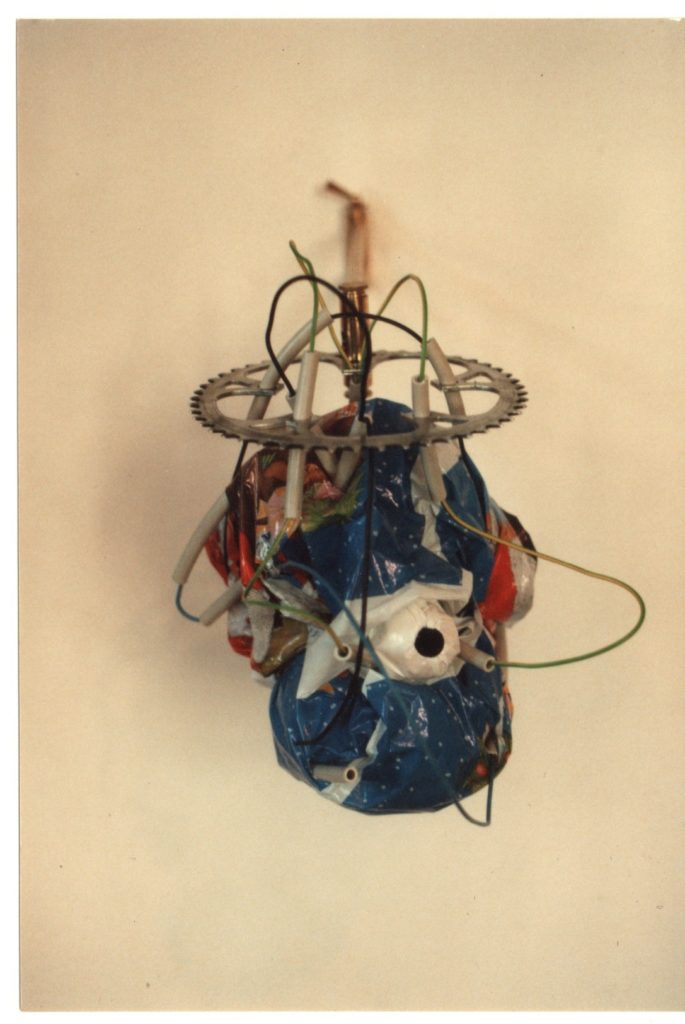Living garbage, 1998, U.R.A., Kunsthaus Tacheles Berlin
link to the video Unedited video material.
Imbecile – Living garbage, 1998, U.R.A.
In the first moment, visitors of this exhibition were petrified finding themselves in such an uncomfortable situation. The exhibition was made from plastic waste and exhibited for the same.
A space between the Zoo, the Cabinet of Curiosities, plant breeders and a gynecologist’s office, a butcher and a gallery, was not easy to obtain.
Stepping inside the gallery floor, the visitors were surround- ed with hanging abstract plastic heads or torsos on the walls or bodies hanging from the ceiling upside down, giving the impression of modern trophies from the middle ages, after a bloody (plastic) war.
The strong smell of plastic, which was spread out through the entire space, could not be ignored.
A monotone electronic-repetitive-factory-machine-sound was inviting and preparing the visitors for entering the main space of the gallery.In this area visitors could experience the birth of plastic and its garbage life.
While the gynecologist’s office is clean and sterile, the process of the birth of plastic happens on a dirty floor and is open for the audience. Two plastic legs which build the entire body were spread wide and from between them a bunch of plastic objects were being born. Some of these objects were on the way to explore their surroundings.While the visitors were observing the exhibition these plastic mechanic object were moving around their feet. Some in the form of a hand, others in the form of some animal, and the next in the form of a garbage can. The longer the visitors were spending time in this space, the more they would get used to the situation. So, when any of the moving plastic objects would fall or stop, the visitors would put them back in the correct position. So the garbage objects would continue their journey. Not far from there came the next step of the garbage habitat: interaction between the junk electric devices.
A long tube wrapped in plastic foil coming out of a turned on TV monitor. As though the TV was eager to hear something, its ear (the long plastic tube) was rising up toward the source of the sound. The sound was coming from a speaker hanging down from the ceiling. In the central column of the space a body of a baby was hang- ing high, wrapped in in plastic foil. With one eye, it was looking down at the spectators.
A pot with a plastic plant with flowers was placed in a corner of the gallery. Behind the pot three neon lights were placed to help the plastic flowers to grow. The entire situation in the gallery gave the impression of cohab- itation between humans and garbage (made by humans).
The life of the garbage would go on, regardless of the presence of visitors. A space which exists and lives without humans.
